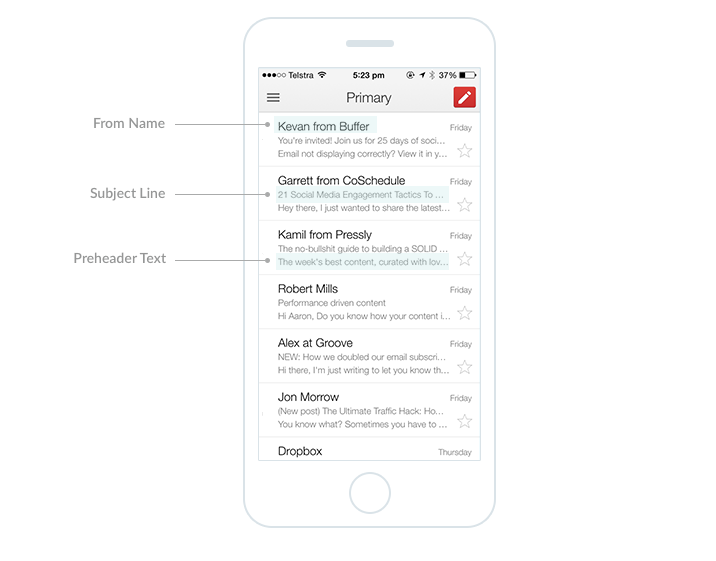When marketers design emails, write copy and choose imagery, it can be tempting to base decisions off your intuition to predict what would make the customer click and convert.
However, basing your decisions off your “gut” could impact your results in a negative way. You’re much better off running A/B tests to make purposeful, strategic and result-driven decisions.
What is A/B Testing?
Let’s pretend that you own a cafe – the Darling Co – and after a few months of minimal revenue, you decide to change up your menu to see if it has an impact on sales. You create a new menu, and instead of a purely text-based menu, you include 5 high-quality images of the highest-priced items on the menu. That’s your only change leaving everything else the same.
You then make 20 copies of each menu, splitting half the cafe with the new and old menu. Over the course of a week, you compare the two sides of the cafe to see whether there has been a change in revenue. Surprisingly, you find that the new image-based menu increased the average price of each table by 18%. You found your match!
This is an A/B test.
Also known as split testing, it is the act of simultaneously running an experiment between two marketing variables (this could be images, copy, layout, headlines) to identify which variable brings a better ROI or conversion rate.
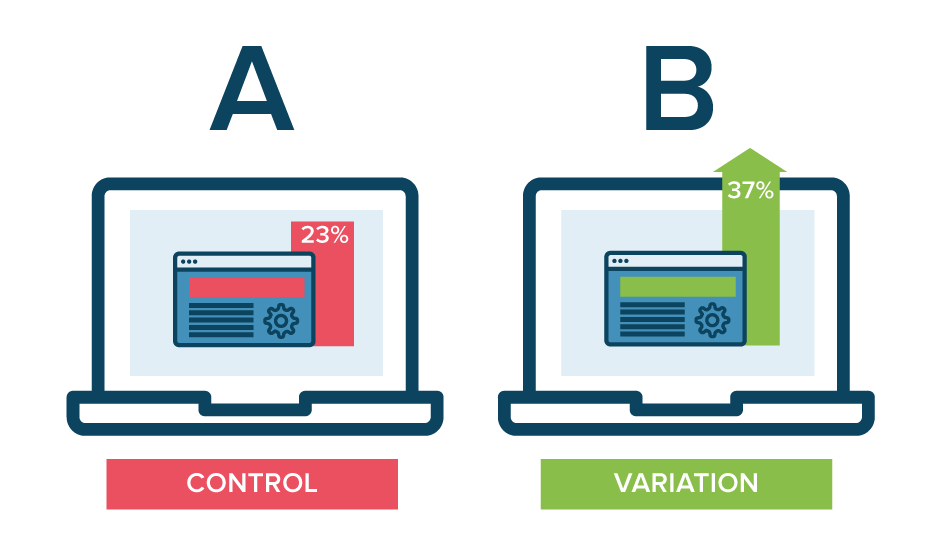
(Image via neilpatel)
When experimenting, it’s important to keep one element the same, known as the “control” (the original menu), and the element that is compared is known as the “variable” (the new menu in this case).
The Benefits of A/B Testing?
Running A/B tests for your emails is a fantastic method for understanding what works. Well-planned and strategically thought out A/B tests can make huge differences to your marketing efforts. Even small tweaks to your email components can improve open, click through and conversion rates.
A/B Testing has two main benefits:
- Bases decisions off data opposed to guesswork or intuition.
- It is one of the cheapest ways to improve sales or conversions.
In this article you’ll learn 6 different A/B tests that you can run in your email marketing.
Your subject line A/B Testing
Writing a killer subject line is one of the most overlooked components in an email. Think of it as a the million dollar lotto ticket that will entice your readers to actually open the email.
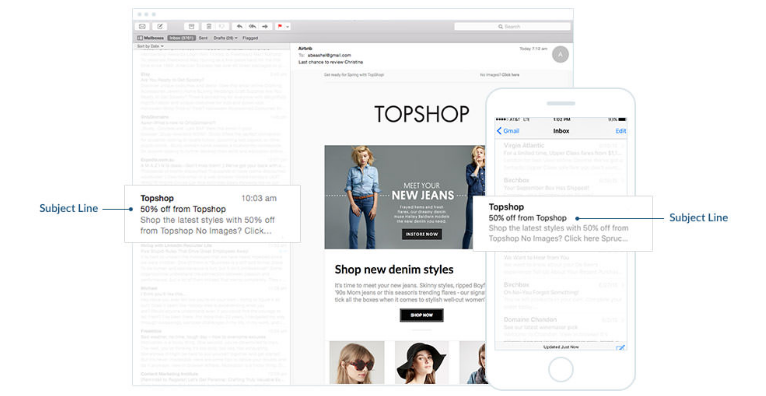
(Image via CampaignMonitor)
Aside from following the simple guidelines and best practices for framing a great subject line, one of the best ways to find out what works is through testing.
Subject Line Variants to Test:
- Length – shorter or longer subject line?
- Answer vs Question.
- Non-urgent vs urgent.
- Negative vs positive.
- Use of symbols or emoticons.
- Use of exclamation point.
- Use of Capitals vs lowercase.
- Use of numbers.
- Use of personalisation.
From Name A/B Testing
This is who the email is from. It might not seem like a big deal but it plays a part in whether a receiver will open the email or not. The reader is subconsciously asking themselves if they know and trust the sender, affecting their decision.
The sender of an email can have a huge impact on open rates. The most common test is sending the email from an employees or individuals name vs company name. You could try and test the following:
- Employee Name
- Company Name
- Employee Name + Company Name
- Something different!
Send Time A/B Testing
Do you know when is the best time to send your email? Wednesdays at 11.30am Eastern time or Fridays at 5pm Pacific? We’re not sure but you can run tests and discover the best time to send emails out of your audience.
Here are some factors to test:
Day of the week
- Time of the day
- Time zone
Text vs HTML emailsA/B Testing
A nicely designed newsletter or a personal text-based email? That depends! So, again you will need to test. Here is an example by Autopilot…
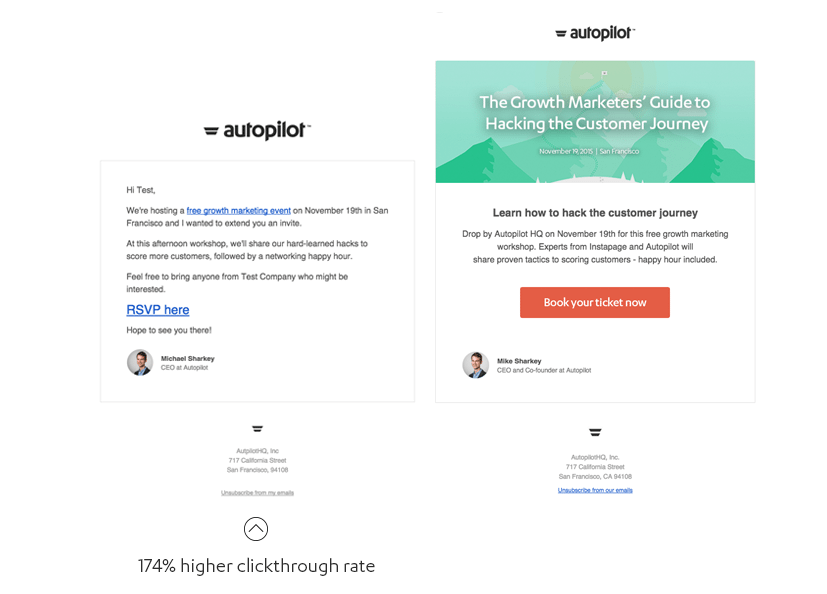
(Image via AutoPilot)
Although the email on the right is more aesthetically pleasing, the personal text-based email earned a 174% higher click through rate and more event attendees. You could conduct this test for your own events, invites, newsletters and sales emails.
Call-to-action button text A/B Testing
If done well, the call-to-action button can be visually compelling and entice people to click. The way your call-to-action is created, and even the chosen text can have a significant impact on click-throughs.
Call-to-action variants to test:
- Button Size
- Colour
- Text
- Special Effects
- Position
- Whitespace
Images A/B Testing
Imagery can affect your conversions, so try testing variations that could lead to a better click-through rate. While images might have a positive impact for some businesses, it might not be the case for all of your emails depending on the design and images chosen.
For example, SitePoint tested their images in their newsletter newsletter and discovered there was a slight decrease for the image based content, as the images were distracted to readers.
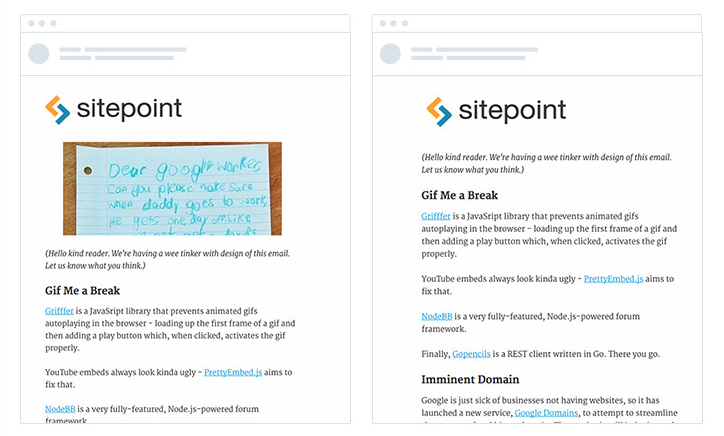
(Image via Campaign Monitor)
Conclusion
Before you start running any tests, you need to determine whether you have a decent size database and sample size big enough to achieve statistical significance (accurate conclusions). We recommend at least a client list of 5 to 10 thousand contacts to avoid skewing results.
A/B testing is a great piece to the wider puzzle to optimise your content and improve your click-through and conversion rates. Are you ready to A/B test your emails?

